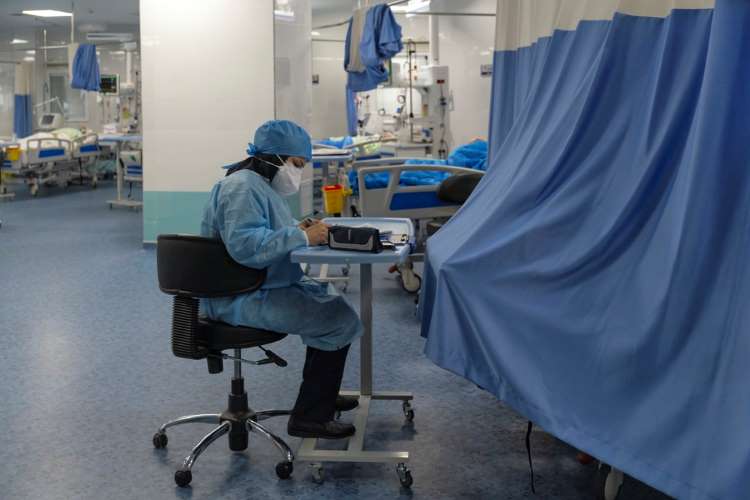
Covid-19 and health insurance: Unlike other assets, health is unpredictably variable. One cannot foresee what will happen the following day, or even the next minute, when it comes to health. In India alone, about 10 lakh people are diagnosed with cancer every year and another 6-7 lakh die of it. By 2035, these numbers may shoot up to 17 lakh new patients and 12 lakh deaths per annum, says a special research paper on cancer in India published in Lancet Oncology journal. Also, the prevalence of diabetes in India has remained at 11.8% in the last few years, according to the National Diabetes and Diabetic Retinopathy Survey report released by the health ministry.
While the probability of getting cancer, diabetes and any other disease have increased substantially, the cost of treatment has also gone up manifold in recent years. In fact, treatment costs now have the potential to wipe out a common man’s entire life savings. This is the reason why health insurance cover has become the need of the hour. All these have huge economic burden, as we estimated in a Woodrow Wilson Center research report in 2012. The economic damage from cancer alone cost about $36 billion in 2012, and this may more than triple in constant prices by 2030.
READ I Fighting heavy odds: Corporate influence over policy weighs on India’s public health system
The Indian health insurance sector has experienced numerous changes in customer behaviour and attitude during the last year. The Covid-19 pandemic has exposed the reality that a large portion of India’s population relies on their savings to cover growing medical expenditure. According to government data, 65% Indians pay for their medical bills out of pocket. The rising financial burden of high healthcare expenditure and lower incomes or loss of livelihood due to Covid-19 have highlighted the necessity of health insurance cover.
Since the onset of the pandemic, the health insurance market has noticed certain new trends and shifts in consumer perception. Prior to the epidemic, many thought of health insurance as a way to offset the costs of illness. Although this impression persists, there has been a growing understanding of the importance of purchasing health insurance. This is owing to the enormous costs of hospitalisation that countless individuals and families faced during the pandemic.
Many people were swayed by this factor to reconsider and purchase health insurance. People also realised that relying on an insurance policy offered by their job was insufficient. The market for health insurance is being driven by the rise in medical costs around the world. Furthermore, the rapid rise in chronic diseases such as heart disease, cancer, type 2 diabetes and arthritis among the global population as well as the ageing problem have all contributed to the market’s growth. The cost of health insurance, on the other hand, may operate as a market restraint.
READ I Covid-19 fiasco: Why it is unfair to blame private hospitals
Health insurance sector in India
The insurance industry of India has 57 insurance companies — 24 are in life insurance business, while 34 are non-life insurers. The Life Insurance Corporation (LIC) is the only public corporation among life insurers. In the non-life insurance business, there are six public sector insurers. There is also a single national re-insurer, the General Insurance Corporation of India. Agents, brokers, surveyors, and third-party administrators handling health insurance claims are among the other stakeholders in the Indian insurance sector.
The industry was opened to private and foreign firms in August 2000. In addition, foreign direct investment (FDI) was permitted in the sector. The FDI cap in the sector has been gradually increased from 26% to 74%. India’s insurance penetration is currently at 3.7% of GDP, compared with the global average of 6.31%. The life insurance industry’s growth has slowed to 11-12% from 15-20% till fiscal 2020, as the pandemic has prompted customers to save money rather than invest in stocks or life insurance plans.
Shot in the arm for health insurance firms
The Covid-19 pandemic has offered a shot in the arm for India’s health insurance industry. More Indians are signing up for private health insurance as a result of the risk of being hospitalised due to Covid-19 and the high medical fees in private hospitals. This has prompted a rearrangement in the pecking order of non-life insurance company portfolios, although a temporary one. In the six months from April to September 2020, health insurance surpassed motor insurance as the most valuable segment for non-life insurers in terms of premiums collected. This has occurred for the first time since the sector was opened to private participants.
As of today, health insurance premiums increased 3% YoY to Rs 17,497 crore in the first quarter of FY22, with retail health increasing by 33% and group health increasing by 23%. Non-life insurers, which include general, standalone, and specialised public-sector insurers, saw premiums rise 19.46% year over year (YoY) in July. Non-life insurers earned a total of Rs 20,171.15 crore in premiums in July, compared with Rs 16,885 crore in the same month previous year.
The pandemic has changed a lot of assumptions which people have about their health. Millennials are adopting good health cover early. What’s more is that they are looking for online platforms that provide digital policy benefits that they can use to manage and improve their health. Due to the increase in digitalisation, the industry now brings in several benefits such as telemedicine, accelerated use of technology and data exchange. Insurers create specific products for different categories of customers and also different categories of expenditure.
The customers are able to pick a policy that suits their requirements and can buy the same online with any major commitment. In contrast, there is a clear preference for taking new health insurance policies. The trend among the large non-life insurers reflects this trend. In this case, it could be clearly concluded that the impact of Covid-19 in terms of health expenditure has pushed a greater population to opt for health insurance. The complete data from all the insurers for the first two quarters of 2021-22 will be key to understand if this trend sustains.
The government’s decision to amend the Foreign Exchange Management (non-debt instruments) Rules, 2019 to enable the increase in foreign direct investment limit in the insurance sector to 74% and existing companies attempting to enter the primary market through initial public offerings (IPOs) will have a significant impact on the sector.
(Dr Badri Narayanan Gopalakrishnan is founder and director of Infinite Sum Modelling. Adems Jimmy George, Anish Uppal are Researchers, Infinites Sum Modelling, LLC.)

